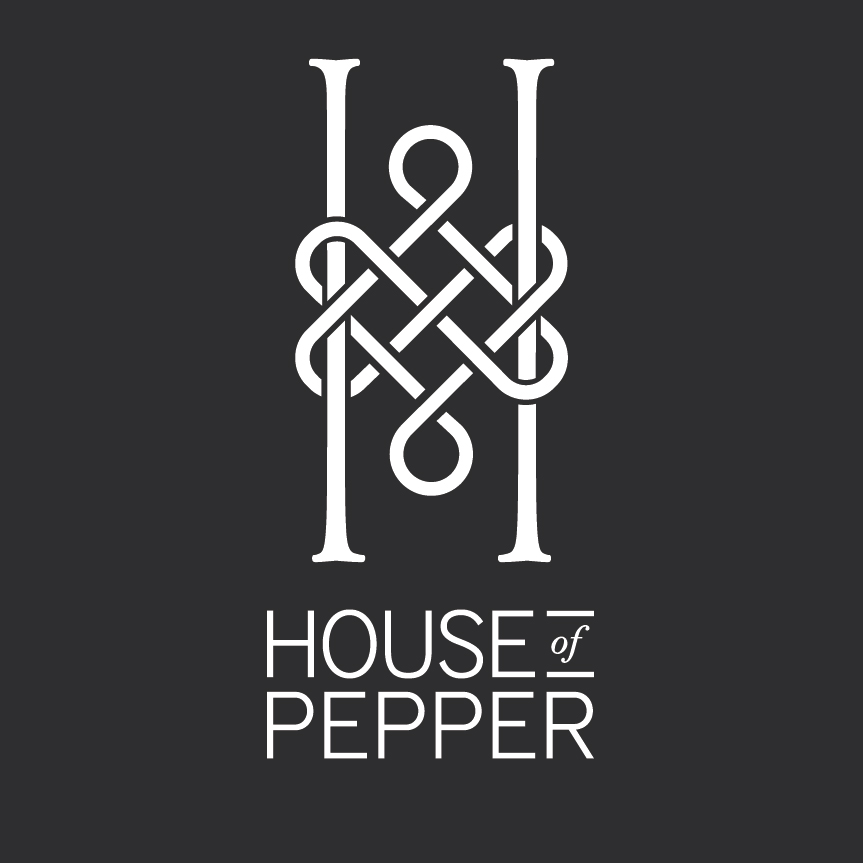Seahorse Pair
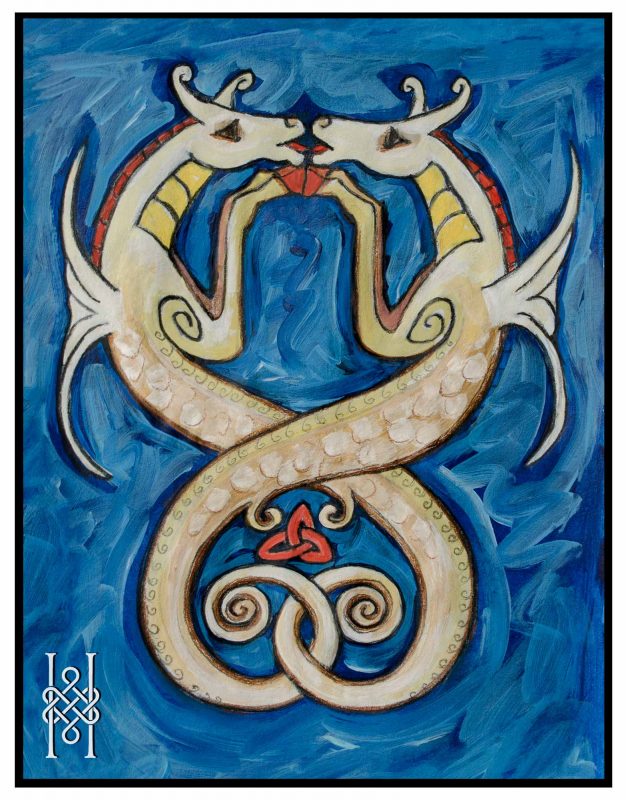
Celtic seahorse pair with land and water horse features.
In my drawing the seahorse tail spirals and interlocks and the heads and hooves meet and touch. I have drawn the horse head rather than the seahorse snout. The seahorse dorsal fin which flutters rapidly for upright swimming is shown and a spiral embeds in the shoulder. My seahorse pair combines the land and water animal. I wanted to catch the same symmetrical balance found in the Pictish seahorse pair carved on the Kirkyard stone at Aberlemno. There are minor changes.
The horses communicate with each other by an identical gesture. Copying the gesture of the other is a sign of approval.
After four stages of courtship and a long courtship dance the female deposits eggs in the male pouch and he carries them for 9 to 45 days until the baby seahorses emerge fully developed. These creatures are so small and beautiful. They have a segmented bony cover like armor on their bodies and have a tail that is prehensile and grabs the seaweed. There is a coronet or horn on the head.
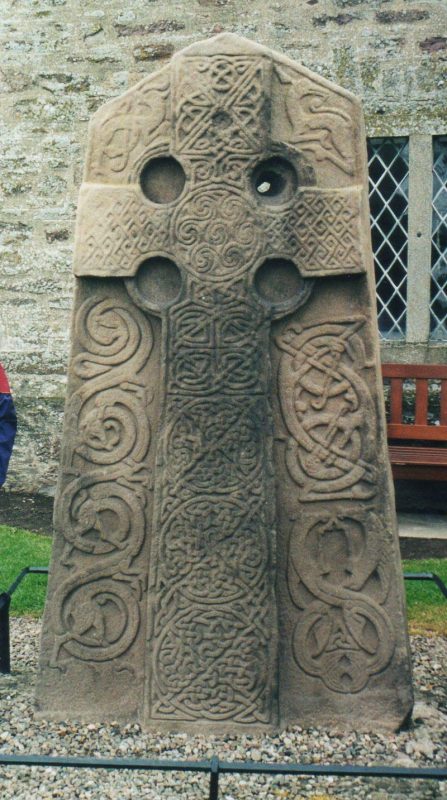
Pictish stone cross Aberlemno Photo: Flickr by S Rae
The Pictish Kirkyard carved stone found in the village of Aberlemno, Angus, Scotland can be seen today. This carved stone is classified as a Class 11 Pictish stone by J Romilly Allen and Joseph Anderson and dated c 800AD. The seahorse pair can be seen in the bottom right of the stone. The photo by S Rae catches the textural beauty of the original work as a carved stone; it shows the seahorse tail as a fish tail on the standing stone.
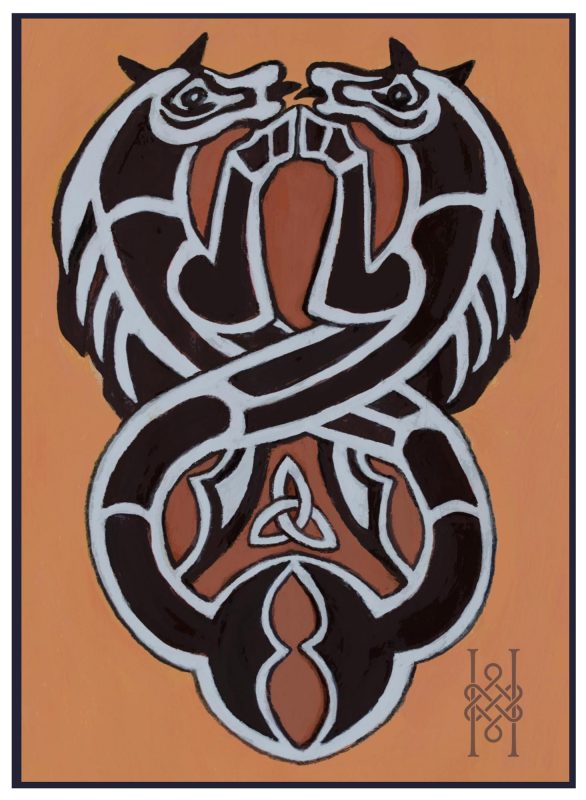
Pictish Seahorse with fish tail from Aberlemno Stone
From the Pictish stones of East Scotland and in the Book of Kells, horses are given attitude by the Pictish artists (ref: George Bain: Celtic Art -Methods of Construction). The horse in perfect conformation steps out proudly with the rider in a united partnership. It is not surprising that the seahorse is given some of the features of the land horse and it is possible that with the limited knowledge of this strange creature, the seahorse became a water dragon that could change shape at will. The seahorse in Celtic mythology became associated with the sea gods.
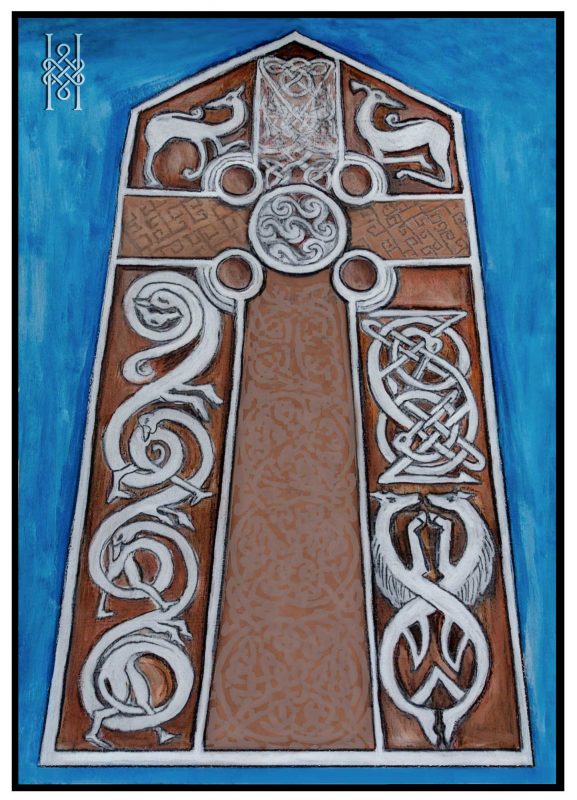
Unfinished Drawing
The carved stones by the Picts are dated from the 6th to the 9th century and were carved in Early Medieval times. Often as carved stone slabs with Celtic crosses, they are rich with animals, birds, interlacing, knotwork and sometimes key patterns in the design. The curved line and spiral are ever present in the Celtic message.
Pictish Symbols
Pictish animal symbols like the Burghead Bull and the Boar have such power and strength demonstrated by the rhythm of line superimposed on the body. Likewise, does the land horse shown in the Book of Kells. The seahorse, however, is not found in the Book of Kells at all. Pictish drawings manage to catch the dynamic essence, the will of the animal and this memorable quality should not be underestimated. It is a shame we don’t know more about the Picts of Scotland and the thinking behind the symbols and motifs that remain today.
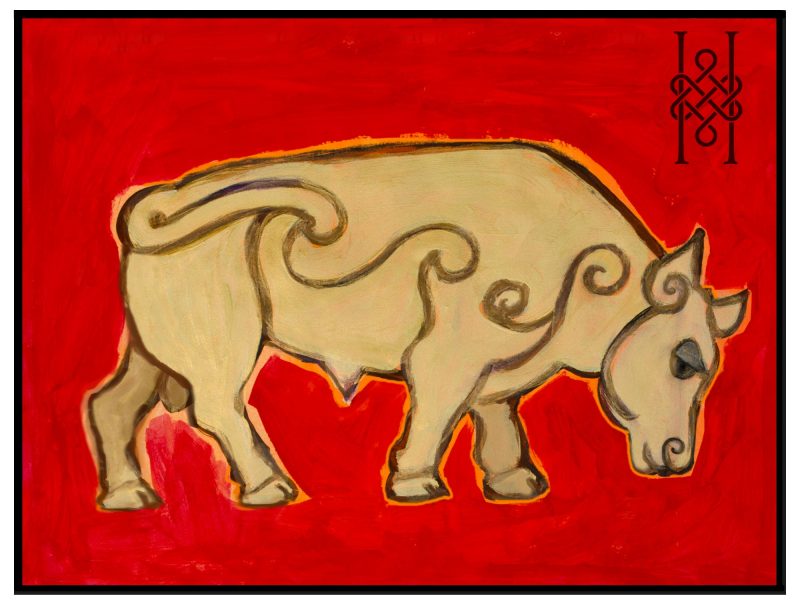
Burghead Bull- simple spirals over the body
The art of the Celt and the Pictish people began a long time before Christianity. Sometimes we need to be reminded of the centuries of learning behind such designs. Art and artists sometimes need to reconnect to ancient roots to recapture a passion and spirit that may be lost today. Ancient and Medieval works can tell us so much about art and the people.
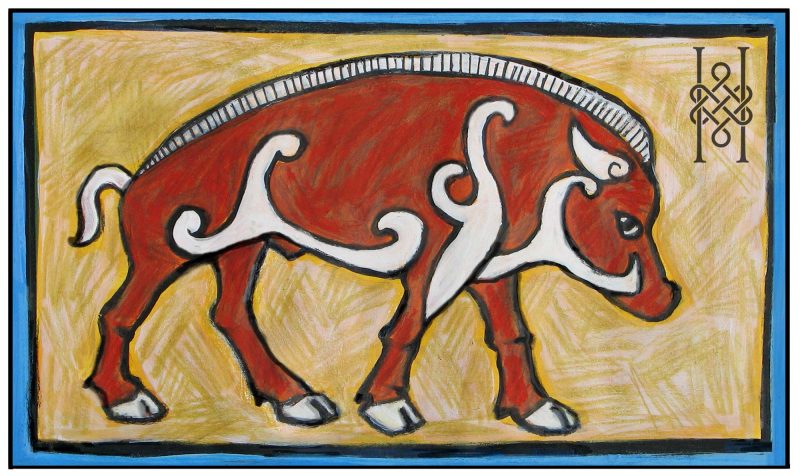
Wild Boar symbol
The Scottish Pictish artists show us economy of line and truth with attitude in their masterful animal symbols not just the horses. I agree with George Bain, the great Scottish teacher. It is a brief sentence found in his book Celtic Art -The Methods of Construction and for me it is an outstanding revelation.
It is the attitude found in the drawings!
These essays are copyrighted as is my original artwork. Pages can be printed and used for education purposes.
